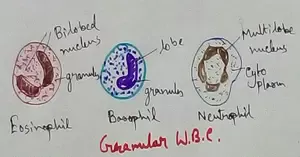Rounding Numbers
Rounding off numbers is an easy way to remember specially big numbers involving 6 or 7 digits or even more. It is also an easier way to remember decimal numbers. Rounding off numbers can be done to nearest tens, hundreds or thousands as needed.
Practical application or necessities of rounding off:
- When we are buying vegetables of the market suppose we bought 7 kgs 253 gm. We usually refer to as 7kgs 250 gm. That is 253 gm is rounded off to 250 gm. That is to the nearest tens.
- When Alice was asked by her friend what is her age she told 12 years. The exact age of Alice is 12 years 1 months 5 days. She has rounded off her age.
- Grey bought a mobile phone for $252.85. When he was asked by his friends what is the price of the mobile Grey said $250. This is rounding off.
This rounding off numbers finds a wide application in our day to day life.
There are certain rules that are followed while rounding off numbers
Rule I: When a number ends with 5, 6, 7, 8, 9 then we round it off to the next nearest tens.
For example:
48 will be rounded off to 50
15 will be rounded off to 10
Rule II: When a number ends with 1, 2, 3, 4 then we round it off to the previous nearest tens.
For example:
42 will be rounded off to 40
24 will be rounded off to 20
Now this rounding off is case specific. That is we have to confirm what are we rounding off to?
Rule III: If we are rounding to nearest 10 tens then 5 is the mid position. Number ending with 5 or more should be rounded off to next nearest tens
For example:
35 will be rounded off to 40
Rule IV: If we are rounding off to nearest hundreds then also we need to find the mid position.
For example:
Round off 437 to nearest hundreds
In this case we need to find the two hundreds between which 437 lies. We know that 437 lies between 400 and 500. The mid position between 400 and 500 is 450. So we need to check whether the number given (here 437) is more than 450 or less than 450. If the given number is 450 or more then we would round the number to 500 and if it is less than 450 then we will round it off to 400. In this example 437 will be rounded off to 400
Rule V: If we are rounding off to nearest thousands we need to find the mid position
For example:
Round off 4750 to nearest thousands
The two thousands between which 4750 lies is 4000 and 5000. The mid position is 4500. We know that if a number is equal to or more than mid position then slide it to next thousands, hundreds or tens (as required). Here we need to round off to nearest thousands hence it will be 5000 as 4750 is greater than mid value (4500)
From Rounding Numbers to HOME PAGE
Recent Articles
-
Formed Elements of Blood | Erythrocytes | ESR |Leukocytes |Neutrophils
Jan 15, 26 01:25 AM
Formed elements formed elements are constitute about 45 % of blood afeias haematocrit value packed cell volume mostly of red blood corpuscles and are of 3 types- erythrocytes, leukocytes and blood pla… -
What Is Plasma? | Blood Plasma | Proteins | Nutrients | Cholesterol
Nov 07, 25 10:29 AM
Blood is a mobile fluid which is a connective tissue and is derived from the mesoderm like cell any other connective tissue. Colour of blood is reddish and that flows inside the blood vessels by means… -
Disorders of Respiratory System | Tuberculosis | Pleurisy | Emphysema
Oct 28, 25 11:39 PM
Tuberculosis is very common disease and is caused by a type of bacteria called Mycobacterium tuberculosis. This disease causes different trouble in the respiration and infection of several parts of th… -
Regulation of Respiration | Respiratory Centres | Inspiratory Area |
Oct 14, 25 12:13 AM
Respiratory Centre is the area that controls the rate of respiration and it is observed to be located in medulla oblongata and pons. Respiratory Centre has the following will dispersed components like… -
Explain Transport of Gases | External Respiration | Tissue Respiration
Oct 09, 25 11:35 PM
In humans gaseous exchange is completed in the following ways the steps are - External Respiration or Breathing - Breathing in false taking in of Oxygen and giving out of carbon dioxide in the body. M…






New! Comments
Have your say about what you just read! Leave me a comment in the box below.